Photographs: Courtesy, GVK Aneesh Phadnis in Mumbai
The GMR group-run Delhi and Hyderabad airports have not only been gleaming examples of successful public-private partnerships, but they are also among the country’s favourites.
The Delhi airport is the busiest in India - passenger traffic stood at 34 million last fiscal - and airlines are keen to make it their hub.
The group's smaller airport in Hyderabad is emerging as a regional aviation hub for low-cost carriers SpiceJet and Tigerair which plan to use the city as their base for flights out of India to Singapore and back.
...
India's best airport: The competition gets bigger and better
Image: T3 terminal at New Delhi International Airport.Photographs: Ramesh N G/Wikimedia Commons Aneesh Phadnis
The two airports have several advantages over other Indian airports because of their swanky new infrastructure and huge traffic potential.
But they may soon face intense competition from GVK group’s Mumbai and Bangalore airports which have revamped terminals and increased capacities.
Mumbai airport’s new terminal called T2, which will be inaugurated by Prime Minister Manmohan Singh on Friday, is set to increase the airport’s annual capacity to 40 million (from 30 million now), improve passenger experience and boost revenues.
Likewise, expansion of Bangalore airport terminal, which opened for public in December, has raised passenger handling capacity to 20 million from 13 million earlier.
The challenge for Mumbai airport, however, will be to attract airlines to make it their hub and become an alternative to Delhi, which already has first-mover advantage.
...
India's best airport: The competition gets bigger and better
Photographs: Wiki-uk/Wikimedia Commons
Bidding for the Delhi and Mumbai airports were held simultaneously and contracts awarded to private consortiums in May 2006. But they have charted different growth paths since then.
Under pressure to meet the Commonwealth Games deadline, the GMR group put the project on the fast track and opened its new terminal T3 in 2010 within three-and-half years of starting construction.
In fact, it is said the GMR group was so short of time that the designing and construction of T3 went hand in hand. The Delhi airport also built a third runway by 2010.
“GMR had to work under strict timelines. GVK was able to plough back internal accruals into construction but GMR did not have that advantage,” says an airport consultant. GMR Infrastructure came out with a public offer in 2006.
...
India's best airport: The competition gets bigger and better
Photographs: Courtesy, GVK
In contrast, Mumbai airport has struggled to meet deadlines. The project had its own set of challenges. A big roadblock was the shifting of Maratha warrior king Shivaji’s statue from the middle of the terminal site.
The relocation delayed the project by nearly two years as the Maharashtra government dithered in giving permission to move the statute.
In addition, the airport's inability to commercially exploit airport land encroached on by slums affected the project’s finance (GVK group had planned to raise Rs 1,000 crore from real estate development to fund the project by March 2013 but the plan failed). The original deadline for completion of Mumbai’s T2 was 2010.
While many of these teething troubles are behind it, some problems still remain. Aviation experts say the new terminal cannot ensure Mumbai becomes an aviation hub as long-term strategic expansion is not possible.
...
India's best airport: The competition gets bigger and better
Image: Nine Mudras by Ayush Kasliwal at the T3 Terminal Indira Gandhi International Airport, Delhi.Photographs: rajkumar1220/Wikimedia Commons
“Though the airport has improved its airside efficiency, there are serious structural capacity constraints,” says Kapil Kaul, South Asia CEO of Centre for Asia Pacific Aviation. The main issue limiting the airport’s capacity are its two intersecting runways, which prevents their use simultaneously. The Delhi airport has three runways.
However, Kaul hopes the outstanding quality of the airport will inspire Mumbai’s political leadership to take the city’s infrastructure development more seriously.
Mumbai does score over Delhi on some fronts. “Delhi airport's T3 has a larger floor area than Mumbai's T2 but Mumbai's terminal has a higher rated capacity (40 million passengers) than Delhi's T3 which has a capacity of 34 million passengers.
...
India's best airport: The competition gets bigger and better
Image: Mumbai's T2 TerminalPhotographs: Courtesy, GVK
Planning of Mumbai airport's T2 suggests more intensive utilisation of floor space for all passenger operations,” says aviation expert Hormuz Mama. “An integrated terminal with modern facilities will benefit transit passengers,” he adds.
At GVK’s other project, the newly-constructed Bangalore airport, however, everything gels together just right.
Unlike Delhi and Mumbai where functioning Airport Authority of India airports were privatised, Bangalore and Hyderabad projects were built from scratch in a public-private partnership.
...
India's best airport: The competition gets bigger and better
Image: Hyderabad International airport.Photographs: Courtesy, GMR
GMR was awarded the Hyderabad airport in 2004 while a consortium of Siemens, Larsen & Toubro and ZurichAirport was selected to construct and operate the Bangalore airport. In 2009, a year after Bangalore airport opened, GVK picked up ZurichAirport’s 12 per cent stake. It now holds 43 percent stake in Bangalore airport.
Analysts say Bangalore terminal urgently required expansion to meet the growing demands.
“Bangalore is an efficient airport, but it was crucial for it to expand. The weakness in the Bangalore terminal was the lack of adequate number of aerobridges for improved operations. This was impacting growth of international traffic,” says Devesh Agarwal, editor of Bangalore Aviation, an aviation blog site. The number of aerobridges have now been increased as part of terminal expansion.
...
India's best airport: The competition gets bigger and better
Image: Bangalore's new airport terminalPhotographs: Courtesy, GVK
Bangalore could prove to be a tough competitor for GMR’s Hyderabad airport which faces a problem of plenty.
“Hyderabad airport has the capacity to handle 12 million passengers,” says Agarwal. However, it is not getting enough passengers. Last year, the airport handled only 8.3 million passengers. Agarwal says to recover the airport’s cost, Hyderabad airport has imposed a user development fee higher than Bangalore and even Mumbai airports.
“The value proposition of Indian airports needs to be re-examined. To increase passenger penetration, it is crucial for both airport fees and aviation fuel taxes to be lowered,'' he adds.
...
India's best airport: The competition gets bigger and better
Photographs: Courtesy, GVK
But while these airports may be competing with each other, they have set a high standard for other private operators bidding for greenfield airport projects.
Amber Dubey, partner and head (aerospace and defence), KPMG, says both GMR and GVK have imbued the Indian aviation sector with a spirit of “yes, we can”.
“The groups have set a high standard to be emulated by other private operators that will get to operate the greenfield airports coming up at Navi Mumbai, Goa, Agra, Kannur and the six brownfield airports currently under bidding,” he says.
...
India's best airport: The competition gets bigger and better
Image: Hyderabad International Airport.Photographs: Courtesy, GMR
Meanwhile, enthused by the success of its airports in India, GMR is aggressively bidding for airports abroad.
“While Male was a setback (political events led to cancellation of GMR’s airport project in the Maldivian capital), the high returns it earned from Istanbul’s Sabiha Gokcen airport in a recession-hit aviation industry has been a significant achievement,” says Dubey.
Earlier this week, GMR group sold its 40 per cent stake in Istanbul airport for about Rs 1,910 crore as a part of its asset-light strategy to pare debt.
...
India's best airport: The competition gets bigger and better
Image: Bangalore's new airport terminal.Photographs: Courtesy, GVK
The group along with a consortium of companies recently won the Cebu airport bid in Philippines against six strong contenders.
“GVK, on the other hand, has been a bit cautious in the global airport scenario, limiting itself to airports in Bali and Yogyakarta in Indonesia,” Dubey adds.
Kaul expects GMR to remain interested in expanding airport portfolio but increasingly its focus will be on India. “We expect GMR to retain control of Maldives airports, while we expect GVK to be aggressive in bidding for local airports including Navi Mumbai,” Kaul adds.
...
India's best airport: The competition gets bigger and better
Photographs: Courtesy, GVK
There the challenge will be to keep costs and tariffs down and involve themselves in all aspects of airport management.
In other words, work closely with the government to enhance tourism footfalls, focus on innovative ways to enhance non-aeronautical revenue that can help cross-subsidise aeronautical charges and provide general aviation and training facilities, advises Dubey.


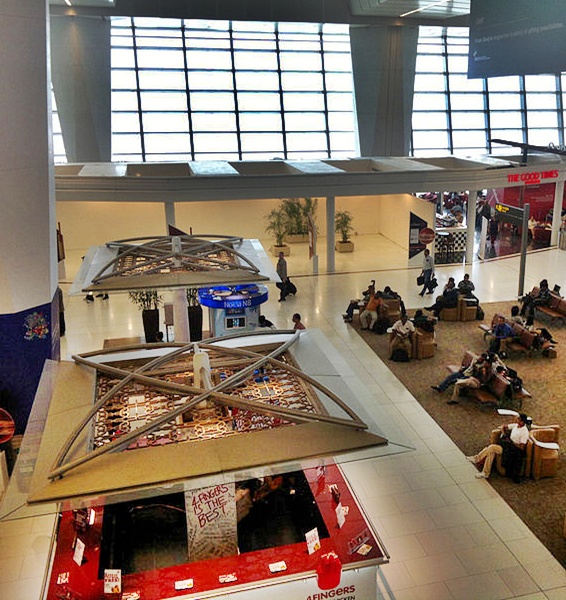

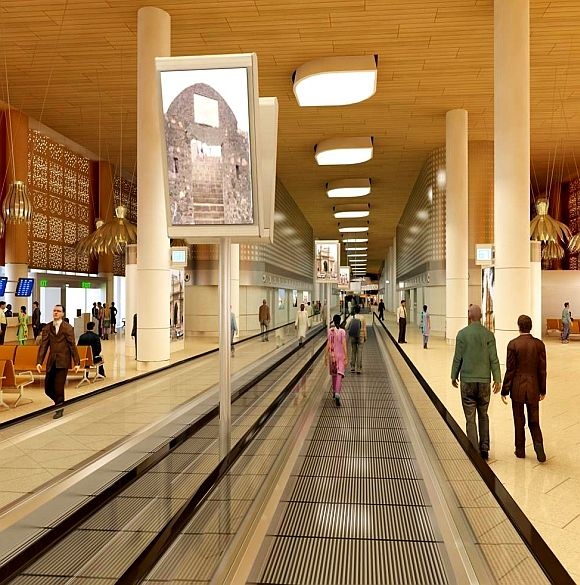
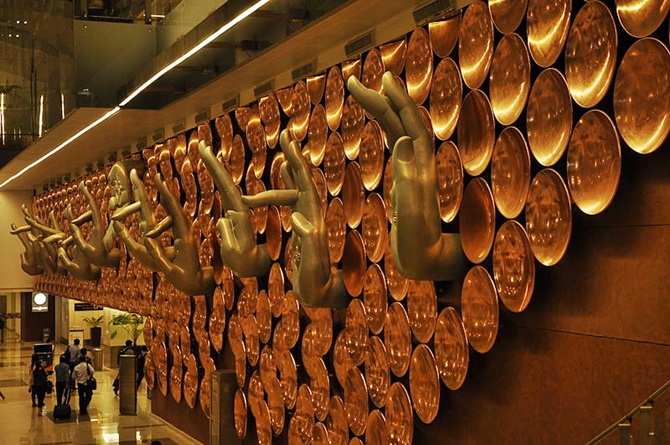
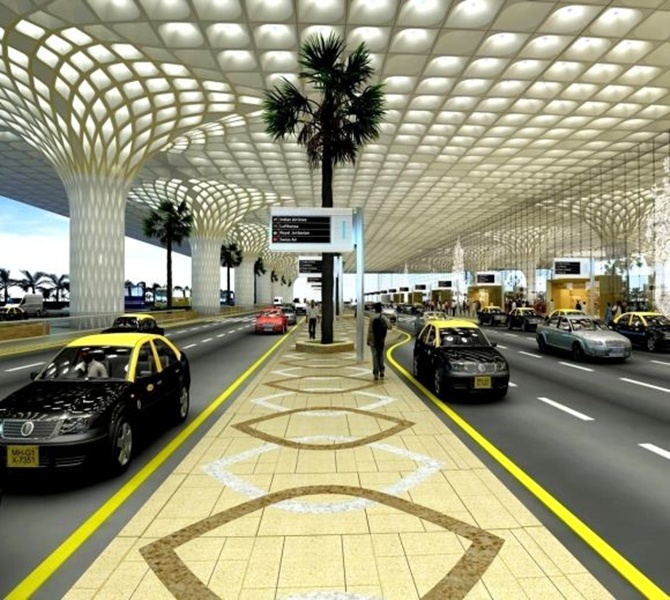


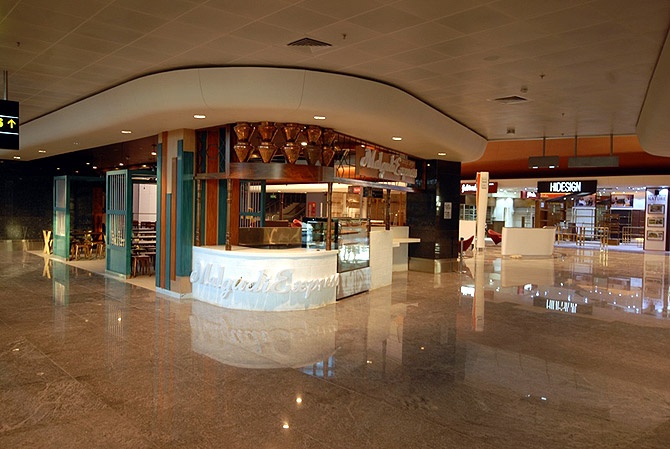
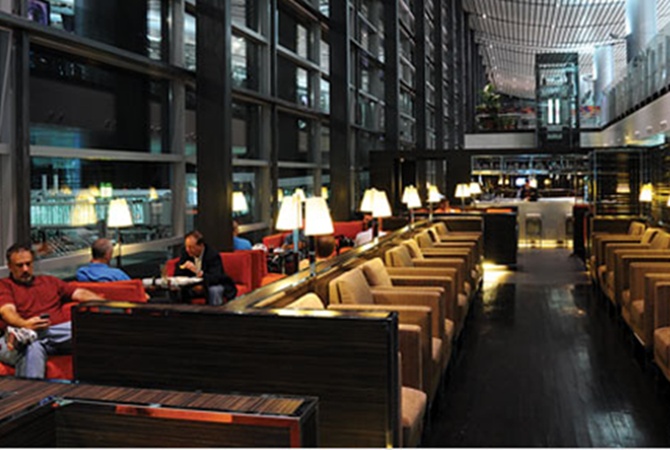
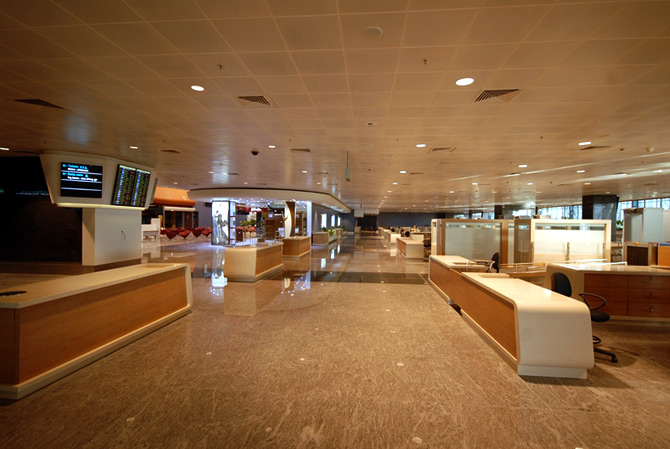


article